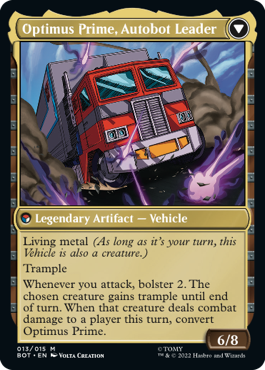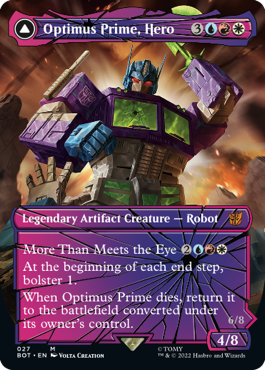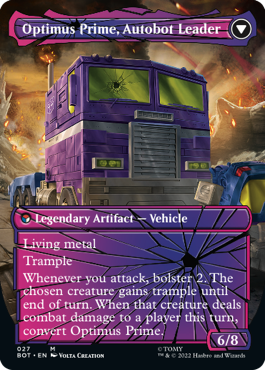The Brothers' War Mechanics
It is the defining conflict of the Multiverse, touching thousands of worlds neither side had even heard of at the time. Two brothers locked in a struggle for power. A simple formula, but nonetheless devastating. The Brothers' War returns us to the origin of Urza and Mishra's fracture, an ancient war seen through modern eyes. What new mechanics await us? Which ones from the past have we dug up for another moment in the sun? Let's take a look.
Prototype
Prototype is a new ability found on several artifact creature cards representing the machines of war in two very different stages of development.
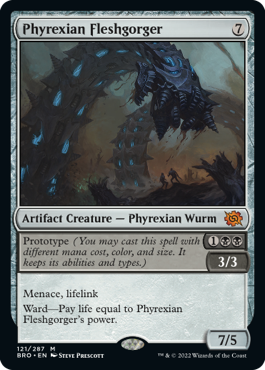
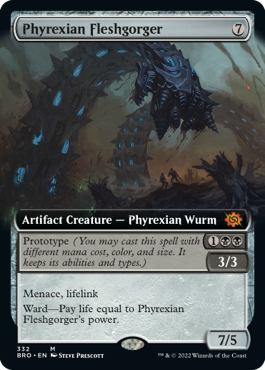
Each prototype card includes two sets of characteristics: First, a larger default mana cost, power, and toughness. They're where you'd expect them to be on the card. A second set of characteristics exists as part of the prototype ability. There, you'll find an alternate mana cost and an alternate power and toughness.
As you cast a prototype card, you choose which set of characteristics you're using. If the battle is ending and you're in need of a heavy hitter, use the default stats. If you're looking to establish a battlefield presence earlier in the game, the prototype stats may be perfect. Either way, the artifact creature will have the other abilities in its text box. Big or little, Phyrexian Fleshgorger has menace, lifelink, and a very scary ward ability.
If a prototype card isn't on the battlefield with its prototype characteristics or on the stack after being cast with those characteristics, it'll have its normal set of characteristics. This means if Phyrexian Fleshgorger is in your library, graveyard, hand, or exile, it's a 7/5 colorless artifact creature with mana cost {o7} and a corresponding mana value of 7.
However, if you cast a prototype spell using the prototype ability, it keeps those characteristics until it leaves the battlefield. That 3/3 Phyrexian Fleshgorger is black, not colorless. Its mana value is 3, not 7. And if you copy it, the copy will also be a prototype—in this case, the 3/3 version of our Phyrexian Wurm friend.
Powerstones
So, what are we all fighting over, anyway? Well, Powerstones, for the most part. Powerstones are a new kind of predefined token type, joining such favorites as Treasure, Food, and Clue. Powerstones offer you more mana, which is great for just about every deck there ever was.
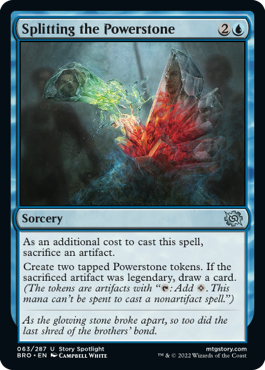
A Powerstone is a colorless artifact that can be tapped for one colorless mana. The mana produced by a Powerstone can't be spent to cast a nonartifact spell, but it can be spent on anything else. This includes artifact spells, activated abilities—even ones of nonartifacts—costs imposed by triggered abilities, any costs to attack or block you may have to pay, and so on.
Unearth
Speaking of digging up older mechanics, unearth is back! Unearth is an activated ability that previously allowed creatures one more go on the battlefield. It still does that, but now noncreature artifacts are getting in on the fun, too. However, most of the cards in the set that have unearth are artifact creatures such as Ashnod's Harvester.
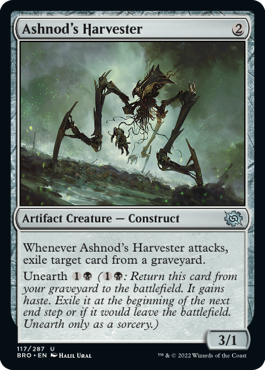
Unearth can be activated only while the card that has it is in the graveyard, and only as a sorcery. The unearthed permanent gains haste. In a lot of cases, you'll be unearthing creatures to get in one more attack. At the beginning of the next end step, exile the unearthed permanent. If it would leave the battlefield before then, it's exiled instead. As they say, all good things
Meld
Meld returns in The Brothers' War, just as weird and wonderful as it was the first time. Meld allows specific pairs of cards, called meld pairs, to combine into a single giant permanent. There are three meld pairs in The Brothers' War, forming Urza, Mishra, and Titania. Let's take a closer look at how the cards combine to form Urza.
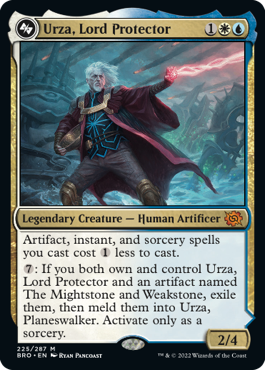
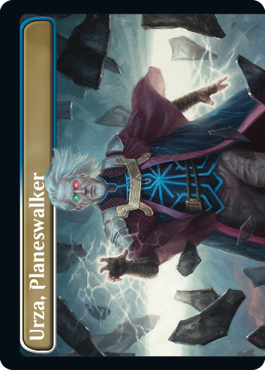
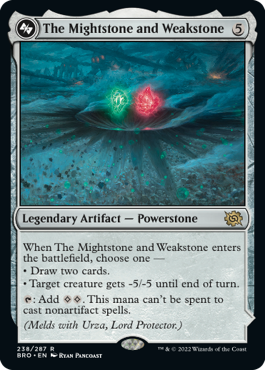
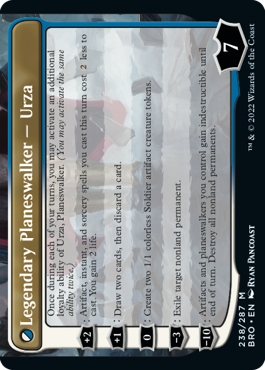
One card in each meld pair—in this case, Urza, Lord Protector—will tell you exactly how to meld the two. You can meld cards only if you both own and control them, and only if they're the actual named cards. So, token copies won't work, nor will any other copies for that matter. Basically, the backs of the cards make up a puzzle, and if you can't complete the image of the puzzle, the meld won't work. Activating Urza's ability will cause the two cards in this meld pair to exile and then meld, meaning they'll return to the battlefield as a single permanent. A single, impressive permanent.
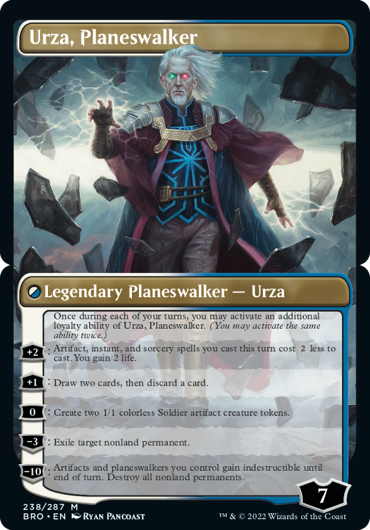
Urza, Planeswalker (the comma is his middle name maybe?) will enter the battlefield with seven loyalty counters as you'd expect, and from there, he behaves like any other planeswalker. A melded permanent is a single permanent; it's just represented by two cards at the same time. If a melded permanent leaves the battlefield, both cards go to where that permanent was headed. Once that happens, the meld will break and the two cards will return to being two separate cards.
TRANSFORMERS
Long fascinated with human history, the Autobots were eager to get a look at one of the Multiverse's storied conflicts. Long fascinated with destroying the Autobots, the Decepticons came along, too. There are fifteen Transformers Universes Beyond cards to be found in this release. These transforming double-faced cards introduce three new keywords:
Convert
Transformers cards usually have a robot mode and a vehicle mode, and strategically convert between the two. Their Magic cards are very similar. Convert is a keyword action that causes a double-faced card to turn over so its other face is up. It's equivalent to the transform action that other double-faced cards use.
More Than Meets the Eye
For most transforming double-faced cards, you always cast them with their front faces up. Their back faces don't factor in until they're already on the battlefield. But with Transformers, there's more than
Living Metal
The vehicle mode of these cards are Vehicles, but they don't have crew. They don't need pilots, after all. They're living metal! Living metal is a static ability that causes the Vehicles to also be creatures as long as it's your turn. So, they're free to attack on your turn and then adopt a defensive position, returning to artifacts on your opponents' turns.

